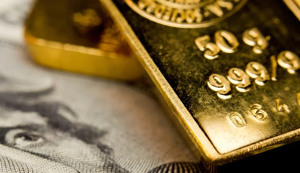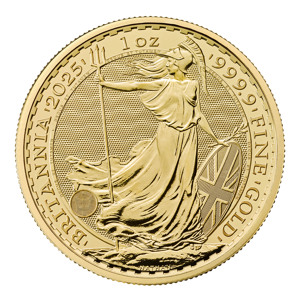Tavex uses cookies to ensure website functionality and improve your user experience. Collecting data from cookies helps us provide the best experience for you, keeps your account secure and allows us to personalise advert content. You can find out more in our cookie policy.
Please select what cookies you allow us to use
Cookies are small files of letters and digits downloaded and saved on your computer or another device (for instance, a mobile phone, a tablet) and saved in your browser while you visit a website. They can be used to track the pages you visit on the website, save the information you enter or remember your preferences such as language settings as long as you’re browsing the website.
| Cookie name | Cookie description | Cookie duration |
|---|---|---|
| tavex_cookie_consent | Stores cookie consent options selected | 60 weeks |
| tavex_customer | Tavex customer ID | 30 days |
| wp-wpml_current_language | Stores selected language | 1 day |
| AWSALB | AWS ALB sticky session cookie | 6 days |
| AWSALBCORS | AWS ALB sticky session cookie | 6 days |
| NO_CACHE | Used to disable page caching | 1 day |
| PHPSESSID | Identifier for PHP session | Session |
| latest_news | Helps to keep notifications relevant by storing the latest news shown | 29 days |
| latest_news_flash | Helps to keep notifications relevant by storing the latest news shown | 29 days |
| tavex_recently_viewed_products | List of recently viewed products | 1 day |
| tavex_compare_amount | Number of items in product comparison view | 1 day |
| Cookie name | Cookie description | Cookie duration |
|---|---|---|
| chart-widget-tab-*-*-* | Remembers last chart options (i.e currency, time period, etc) | 29 days |
| archive_layout | Stores selected product layout on category pages | 1 day |
| Cookie name | Cookie description | Cookie duration |
|---|---|---|
| cartstack.com-* | Used for tracking abandoned shopping carts | 1 year |
| _omappvp | Used by OptinMonster for determining new vs. returning visitors. Expires in 11 years | 11 years |
| _omappvs | Used by OptinMonster for determining when a new visitor becomes a returning visitor | Session |
| om* | Used by OptinMonster to track interactions with campaigns | Persistent |
| Cookie name | Cookie description | Cookie duration |
|---|---|---|
| _ga | Used to distinguish users | 2 years |
| _gid | Used to distinguish users | 24 hours |
| _ga_* | Used to persist session state | 2 years |
| _gac_* | Contains campaign related information | 90 days |
| _gat_gtag_* | Used to throttle request rate | 1 minute |
| _fbc | Facebook advertisement cookie | 2 years |
| _fbp | Facebook cookie for distinguishing unique users | 2 years |
Gold Coins: Understanding Face Value vs. Gold Value

Lots of people may wonder what is the nominal value of coins and why is it different from the market value?
Gold coins are among the most popular ways to invest in gold. Unlike gold bars, many gold coins are considered legal tender in their country of issue and have an official face value.
But what does this face value actually represent? And how does it compare to the real value of the gold in the coin? Let’s explore.
What Is Face (Nominal) Value?

Gold and silver have been used as currency for thousands of years. In fact, it was only about a century ago that most countries adopted the gold standard, meaning gold directly backed their currencies.
Gold coins minted during that time carried a face value recognised by the issuing country
This tradition continues today. Coins produced by national mints are, or have been, legal tender – meaning they can technically be used to pay for goods, services, or even taxes.
However, in practice, the face value of a gold coin is only a fraction of its actual market worth, which is based on its precious metal content.
Face Value vs. Gold Value

Take, for example, the Vienna Philharmonic – one of the world’s most popular gold coins. It has a face value of €100 in Austria. Yet the coin contains 31.1 grams of 999 fine gold, which is currently worth around $3,300 (USD). Clearly, no one would use such a coin for a €100 purchase.
The same applies to silver coins. A one-ounce silver Vienna Philharmonic has a face value of €1.50, yet the silver it contains is worth approximately $33.
This stark difference shows that these coins function primarily as a store of value or investment, rather than as everyday currency.
A Brief History of Gold Coin Composition
Gold and silver coins have long been prized for their stability. The earliest known coins, minted in the 6th century BC in the ancient Greek kingdom of Lydia, were made from electrum – a natural alloy of gold and silver, according to Herodotus.
From the Roman Empire through to modern Europe, precious metal coins served as standard currency
Until the 1930s, most were circulation coins, designed for daily use. To improve durability, these coins typically had lower gold purity and were alloyed with other metals, as pure gold is soft and easily damaged.
For example:
- The 20 Franc coin had a gold purity of 90% (900 fineness).
- The British Sovereign, in continuous production since 1817, has a gold purity of 91.7% (917 fineness).
These coins were built to last and withstand regular handling.
The End of Gold as Legal Tender
Following World War I and the Great Depression, many countries abandoned the gold standard in favour of fiat currency – money not backed by physical commodities. This shift made gold coins obsolete for everyday transactions.
As a result, mints began producing high-purity gold coins, not for circulation but as investment-grade assets. Despite this shift, these coins retained face values to preserve their status as legal tender.
Read more on the topic here: What is a Legal Tender and Why is it a Good Investment?
Let’s now look at some of the most well-known modern gold coins where market value far exceeds the face value.
Popular Gold Coins and Their True Value

Canadian Maple Leaf

- Issued by: Royal Canadian Mint
- First issued: 1979
- Face value: 50 Canadian dollars
- Gold content: 1 oz (31.1 g) of .999 or .99999 pure gold
The Canadian Maple Leaf is one of the purest gold coins available. While its face value is CA$50, its actual gold content is worth thousands. The coin features Canada’s iconic maple leaf and a portrait of the reigning British monarch.
Over 37 million have been produced since its launch.
Britannia

- Issued by: The Royal Mint (UK)
- Face value: 100 British pounds
- Gold content: 1 oz (31.1 g) of .999 pure gold
The Britannia coin features the female warrior Britannia, a symbol of British strength since Roman times. The reverse side depicts the reigning monarch. Like the Maple Leaf, it’s also issued in fractional sizes with corresponding face values.
With over 1,100 years of minting heritage, the Royal Mint is globally renowned for its gold and silver coin production.
Australian Gold Kangaroo

- Issued by: Perth Mint
- First issued: 1987
- Face value: 100 Australian dollars
- Gold content: 1 oz (31.1 g) of .999 pure gold
The Australian Kangaroo is unique in that its design changes each year. This collectable feature adds to its appeal among investors and collectors alike. The Perth Mint is the oldest mint in Australia and is widely recognised for its innovative and high-quality coins.
These coins are just a few examples that illustrate the vast difference between face value and intrinsic gold value. The same principle applies to all bullion gold coins issued by reputable mints.
Conclusion
As we’ve seen, the nominal (face) value of a gold coin is typically symbolic – far lower than its actual gold value. Nevertheless, it signifies the coin’s legal tender status and historical roots as currency.
More importantly, it highlights gold’s enduring role as a stable store of wealth – especially in contrast to fiat currencies, which lose purchasing power over time due to inflation.
While the face value stays the same, the real value of these coins – and gold itself – continues to rise.




















